The nine-story tower is 66.90 meters tall (62.59 m without the ornament on top, 51.65 m at the observation deck), and was the city’s tallest structure when it was built. The elevation at ground level is 35 meters above sea-level. The tower has an external diameter of 16.45 meters at the base, and 8.95 meters diameter inside, and walls that are 3.75 meters thick.There is a restaurant and café on its upper floors which command a magnificent view of Istanbul and the Bosphorus. Also located on the upper floors is a night club which hosts a Turkish show. There are two operating elevators that carry visitors from the lower level to the upper levels.
History
Galata Tower was built as Christea Turris (Tower of Christ) in 1348 during an expansion of the Genoese colony in Constantinople. The Galata Tower was the tallest building in Istanbul at 219½ feet (66.9 m) when it was built in 1348. It was the apex of the fortifications surrounding the Genoese citadel of Galata. The current tower should not be confused with the old Tower of Galata, an original Byzantine tower named Megalos Pyrgos (English: Great Tower) which controlled the northern end of the massive sea chain that closed the entrance to the Golden Horn. That tower was on a different site and was largely destroyed in 1203, during the Fourth Crusade of 1202–1204.
The upper section of the tower with the conical cap was slightly modified in several restorations during the Ottoman Empire when it was used as an observation tower for spotting fires.
According to the Seyahatname of Ottoman historian and traveller Evliya Çelebi, in circa 1630-1632, Hezarfen Ahmet Çelebi flew as an early intercontinental aviator using artificial wings for gliding from this tower over the Bosphorus to the slopes of Üsküdar on the Anatolian side, nearly six kilometres away. Evliyâ Çelebi also tells of Hezarfen’s brother, Lagari Hasan Çelebi, performing the first flight with a rocket in a conical cage filled with gunpowder in 1633.
Starting from 1717 the Ottomans began to use the tower for spotting fires in the city. In 1794, during the reign of Sultan Selim III, the roof of the tower made of lead and wood, and the stairs were severely damaged by a fire. Another fire damaged the building in 1831, upon which a new restoration work took place.
In 1875, during a storm, the conic roof on the top of the building was destroyed. The tower remained without this conic roof for the rest of the Ottoman period. Many years later, in 1965-1967, during the Turkish Republic, the original conical cap was restored. During this final restoration in the 1960s, the wooden interior of the tower was replaced by a concrete structure and it was commercialized and opened to the public.
From the top of the tower, the first French panorama painter Pierre Prévost drew in 1818 his “Panorama de Constantinople” which was later exposed in Paris in 1825.
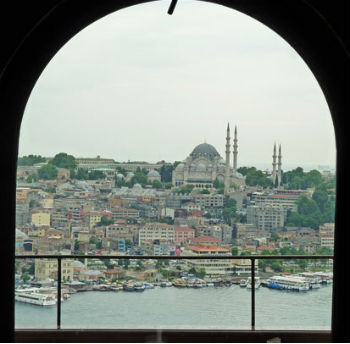
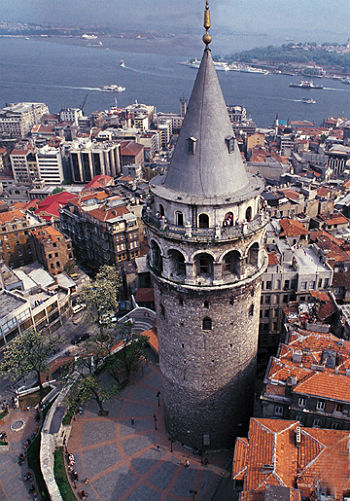
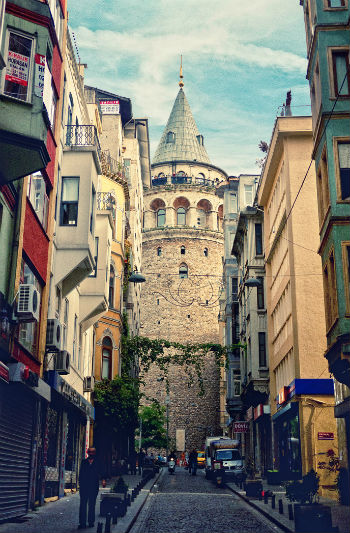
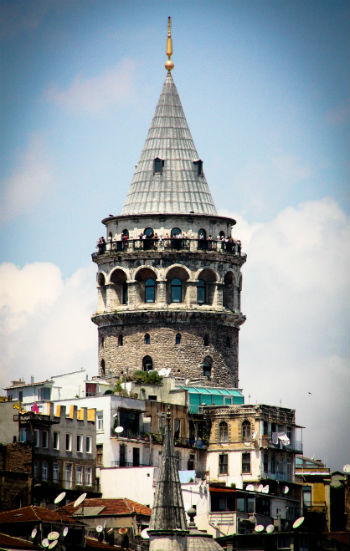
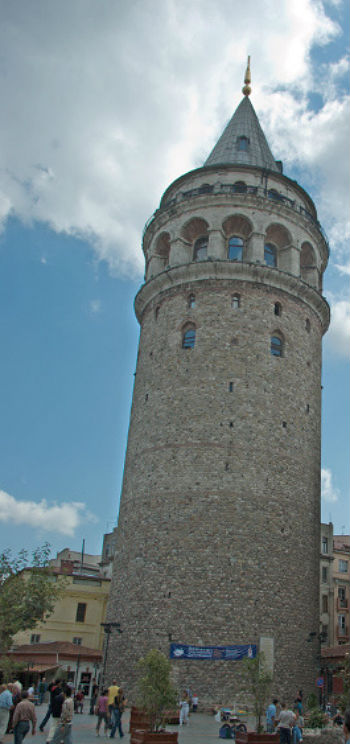


On a clear day, Galata Tower is well worth a visit for its incomparable view of the old city's skyline. From the narrow stone balcony, you can watch ships queuing up to pass through the Bosphorus strait and look across the water to Asia.
This is a very nice tower, with a very nice view. Walk and admire the view is so small that sometimes you can't even have a good time. When I was there, people had to keep pushing themselves against the wall so other people could walk through.
While touring this up art of the city, we climbed the tower. It started a a lookout tower and is obvious why once at the top. Incredible vistas across the city – great for photography. The stairs are steep so caution is essential and the viewing platform is narrow but not a problem if people are polite.
There is an elevator that will take you _almost_ to the top of the tower but still you need to climb from the elevator till the viewpoint for about 2 floors up (by the steep spiral staircase). There is a restaurant inside which in my opinion good for romantic dinners.
This is one of the few sites that's not within easy walking distance of the Sultanahmet Park, but it's worth the trip for the spectacular panoramic views of the city. We did not have a long wait, perhaps because we went in the middle of the day.
Amazing views. I recommend going there at sunset, and you can experience beautiful play of light and shadow across the city.
For a historic structure that (1) is not even authentic (original wooden structure rebuilt with concrete), (2) shows little effort to explain the history & significance; (3) small size (you can finish the entire tour in half an hour.
Impressive to look at at night. Wouldn't bother going up if you are pushed for time. Vuews are just as good from a Panoramic Restaurant up from Basillic Cisterns. Bit crowded as we were up so may have coloured our opinions. Not a bad experience, just SO many better things to do in this fabulous city.
Getting to the Tower on foot is quite a task as it is all uphill from the water. Most of the way up the tower is by an elevator so it is quite easy getting up there. The views are nice, but the viewing area is very narrow.
If you have the energy to climb the steep slope to the tower, go for it! The tower itself has great views from the balcony, but beware of the restaurant pricey items and not so good quality. Another thing is the balcony is very small and two people can cross each other with difficulty.